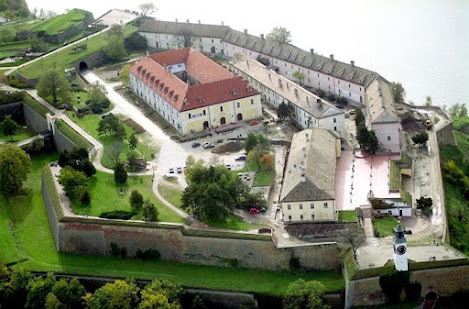"Don’t put your dreams on hold. Don’t wait for the right time to come. And don’t wait for this or that to be finished. Things change quicker than you think, and suddenly it’s too late. And then you’ll regret it for the rest of your life." -- Hendrik Falkenberg (Time Heals No Wounds [Baltic Sea Crime #1])
=====================================================================(in Lithuania, the largest and most southerly of the three Baltic republics)
Whether due to the Baltic Sea breeze or its many midsummer days, Lithuania has an otherworldly quality; its beaches are spangled with amber, and woodlands are alive with demonic statues. Medieval-style mead and traditional wood-carving remain in style here.
+ Lithuania is bounded by Latvia to the north, Belarus to the east and south, Poland and the detached Russian oblast of Kaliningrad to the southwest (and the Baltic Sea to the west). Lithuania was a powerful empire that dominated much of eastern Europe in the 14th–16th centuries before becoming part of the Polish-Lithuanian confederation for the next two centuries. Aside from a brief period of independence from 1918 to 1940, Lithuania was occupied by Russia beginning in 1795, was controlled by Germany for a period during WWII, and was incorporated into the Soviet Union in 1944 as one of its constituent republics. On March 11, 1990, Lithuania declared its independence. The new Soviet parliament acknowledged Lithuania’s independence on September 6, 1991. Little more than a decade after it regained its independence during the collapse of the Soviet Union in 1990, Lithuania joined NATO, and then the EU in 2004.
+ In Lithuania there is a high level of interest in cultural life. Despite modern influences, Lithuanian folklore continues to be a great part of national heritage. Lithuanian songs and a collection of fairy tales, legends, proverbs, and aphorisms have roots deep in a language and culture that are among the oldest in Europe.
+ A stroll through Lithuania’s capital is like a visual potted history tour; East meets West and old meets new in the moonlit alleyways of Vilnius (shown here), the country's capital city. Other major cities are Kaunas, Klaipėda, Šiauliai, and Panevėžys.
+ There is a dreamy quality to Vilnius, especially in the golden glow of a midsummer evening. Lithuania's capital has an Old Town of rare authenticity; marvellously intact, its pebbly streets are lined with weather-worn period buildings that hide cafes, boutiques. and dainty guesthouses.
+ Vilnius has quite an extensive history, starting from the Stone Age; it was the head of the Grand Duchy of Lithuania until 1795, even during the Polish–Lithuanian Commonwealth. The city has changed hands many times between Imperial and Soviet Russia, Napoleonic France, Imperial and Nazi Germany, Interwar Poland, and Lithuania. It was often the site of conflict after the end of World War I and during World War II. It officially became the capital of independent, modern-day Lithuania when the Soviet Union recognized the country's independence in 1991.










